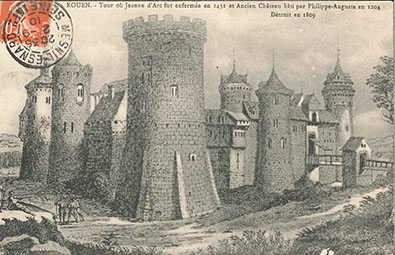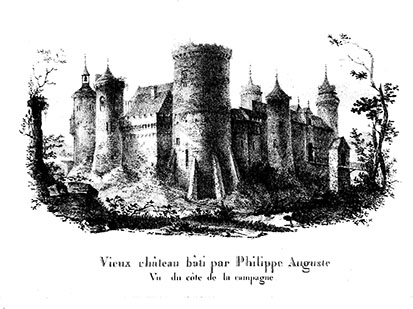A castle overlooking Rouen
The construction of a medieval fortress
In 1204, just after his conquest of Normandy, Philip Augustus ordered the construction of a castle in Rouen. This castle was built on Bouvreuil Hill, a strategic position allowing it to dominate the city. The fortress was built on the site of the old Gallo-Roman amphitheatre.
The Château de Rouen, built between 1204 and 1210, is probably one of the largest ever built by Philip Augustus. It was built to a polygonal plan and consists of 10 towers, including the main tower: the Keep, or Donjon. Today, this tower is the only remaining vestige of the medieval castle.

The fortress was a place of extensive power; it played both a defensive and an administrative role. It was also the seat of the Exchequer of Normandy, the Bailiwick and the Viscounty of Rouen. It was also a royal residence.
The castle witnessed major historical events over the course of the almost five centuries during which it ruled over the city.
It was the site of the trial of Joan of Arc during the Hundred Years' War. She was kept prisoner at the castle from 23 December 1430 to 30 May 1431. She was held in the tower that later was known as the "Tour de la Pucelle", of which only the foundations remain today. On 9 May 1431, Joan of Arc was taken to the Donjon where she was threatened with torture, in vain.
Later, during the Wars of Religion, Catholics and Protestants fought for control of the town and its fortress. The castle was bombed and its towers were severely damaged. On 24 February 1590, an order was given to demolish the fortress.
Demolition of the castle began in early 1591.
